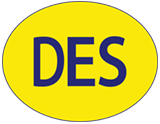Accessibility
DES is committed to, and has made every effort to ensure that everyone can access our website and online resources. This includes people with sight, hearing, mobility and cognitive impairments and for people using 3rd party access and adaptive software such as screen readers and screen magnification.
We endeavour to ensure that our website and online resources are compatible with the widest range of operating systems and browsers including people that still use dial up modems to connect to the internet through to people using smartphones and tablets.
We regularly test our sites on various platforms including Windows (Internet Explorer, Chrome, Firefox, etc.), Mac (Safari, Firefox, Chrome, etc.) and mobile devices running Apple iOS, Android and Windows.
Accessibility within our sites
ALT Tags
To ensure that all of our viewers get the most out of our pages, we, where possible, use ALT Tags to label our graphics and photos.
Headings
To help improve the navigation of our pages, we have included a heading structure. This should help make viewing our site easier and enhance the navigation of our pages for people using a screen reader.
Links
We have used descriptive link names across our site. Where links are generated automatically and non-descriptive, we’ve added extra links to the same information.
Accordion Menus
Some of our web pages use Accordian menus to hide/display text. Accordions, sometimes known as slides or panels, are a smart way of hiding sections of text until you wish to view it. We have incorporated an ‘Open All/Close All’ or ‘Open/Close’ link in all of our accordion menus to help with navigation and readability. We recommend that screen reader users use the ‘Open All’ link when viewing the accordion menus so that all the information is visible to the screen reader and therefore making navigating and reading much easier.
Accessibility Schemes and Controls
We have included some links at the top of our site that will change the text and background colours. In addition to these default schemes, you can change the way you view your internet using the built in accessibility or personalisation features found in most web browsers.
Most web browsers will allow you to increase and decrease the size of the text and images on the page using the ‘zoom’ facility. In many web browsers, this is as simple as pressing “Ctrl +” to zoom in (make larger) and “Ctrl -“ to zoom out (make smaller). However, these changes are often temporary and may be lost when you open a new browser window or the next time you start your web browser.
For more information about changing accessibility or personalisation features within your browser, either check your ‘help’ menu or do a search for ‘Accessibility Features’ and your web browser name (for example, search for Accessibility Features + Internet Explorer).
If you find that our website or any of our resources are not accessible to you or you have some comments or feedback that you would like to share with us, then please ‘Contact Us’.




